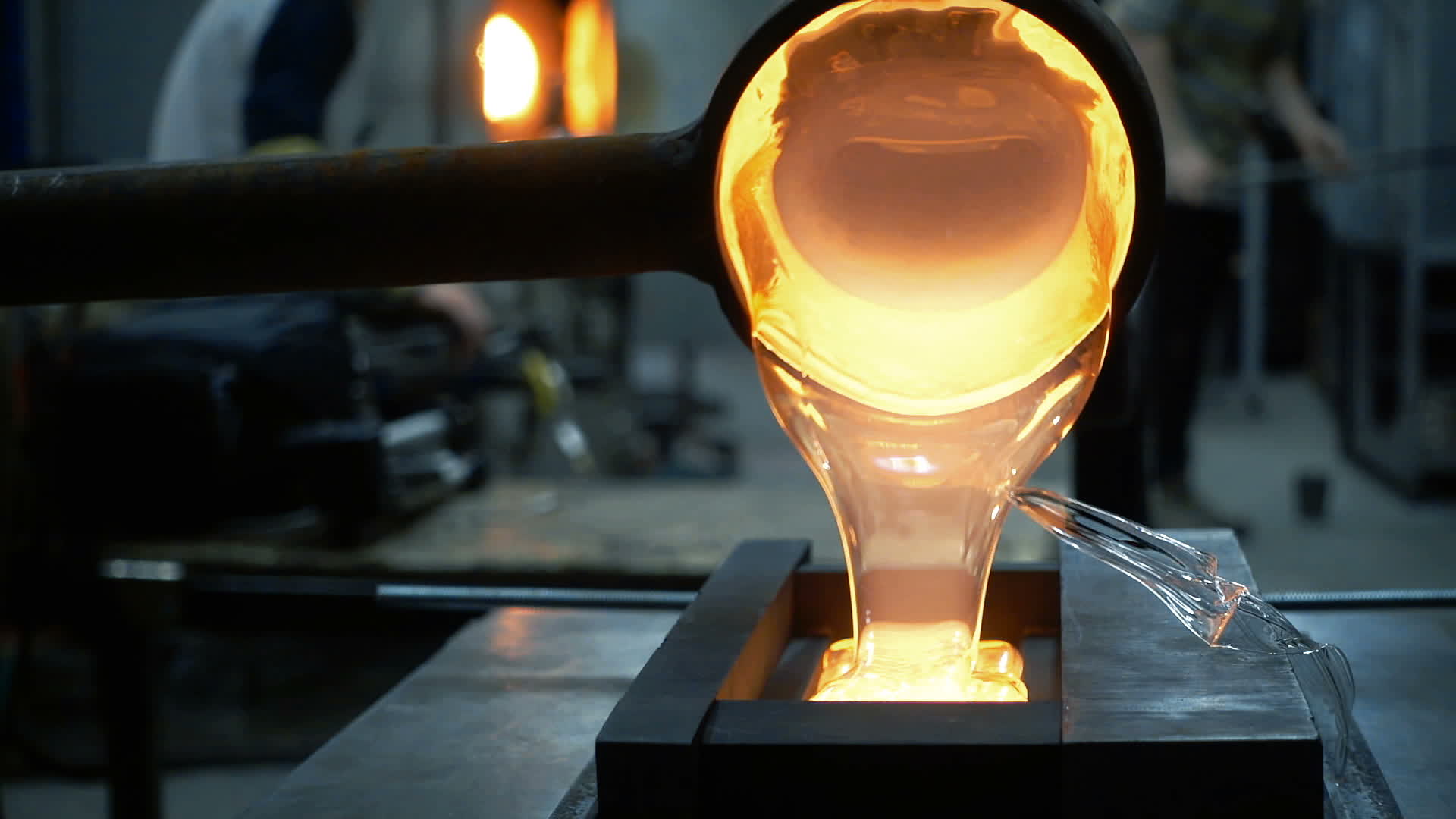
Did you know that glassmaking dates back thousands of years and has roots in ancient civilizations? From accidental discoveries by sailors to the sophisticated techniques of the Romans, glass has transformed from a rare luxury to an everyday essential. Imagine ancient Egyptians and Mesopotamians firing clay and stumbling upon the magic of glass. Roman glassblowers revolutionized the craft, spreading their skills across the empire. Fast forward to the Middle Ages, and Venetian artisans on Murano Island guarded their secrets fiercely. Today, glass remains a marvel of human ingenuity, blending art and science. Dive into these 35 fascinating facts to uncover the rich history of glassmaking!
Key Takeaways:
- Glassmaking has a fascinating history dating back to ancient times, from accidental discoveries to the development of sophisticated techniques. It has played a significant role in human civilization and artistic expression.
- The evolution of glassmaking has led to the creation of unique and high-quality glass products, from ancient civilizations to modern innovations. Glass is not only a durable material but also a medium for artistic expression and environmental sustainability.
The Origins of Glassmaking
Glassmaking has a rich history that spans thousands of years. From its accidental discovery to its evolution into an art form, glass has played a significant role in human civilization.
-
Natural Glass Formation: Natural glass has existed since the beginning of time, formed by high-temperature phenomena such as volcanic eruptions, lightning strikes, and meteorite impacts. Examples include obsidian, a volcanic glass, and tektites, naturally formed glasses of extraterrestrial origin.
-
Accidental Discovery: The accidental discovery of glassmaking is attributed to ancient traders. Roman author Pliny the Elder suggested that sailors may have discovered glass by mixing soda with sand on a beach, creating the first manmade glass.
-
Ancient Egyptian and Mesopotamian Discoveries: It is also believed that ancient Egyptians or Mesopotamians discovered how to make glass independently, possibly while firing clay for pottery.
Early Glassmaking Techniques
The methods used to create glass have evolved significantly over time. Early techniques laid the foundation for the sophisticated processes we use today.
-
Early Evidence of Glassmaking: The oldest fragments of glass vases date back to the 16th century BC in Mesopotamia. Hollow glass production was also evolving around this time in Egypt, with evidence of other ancient glassmaking activities emerging independently in Mycenae (Greece), China, and North Tyrol.
-
Glassmaking in the Roman Empire: Glassblowing as we know it today was developed during the Roman Empire in the first century BC. The art was supported by the Roman government, with the first large glass workshops established by the Phoenicians on the eastern borders of the empire.
-
Spread of Glassblowing: The Roman Empire spread glassblowing techniques throughout the ancient world. Glass objects became more common during this period, both as functional devices and works of art.
-
Glassmaking Techniques: The earliest known evidence of glassblowing was found in the Chogha Zanbil ziggurat complex in Iran, dating back to the 2nd millennium BC. However, the exact techniques used to create these early glass bottles are still unclear.
Centers of Glassmaking Excellence
Certain regions became renowned for their glassmaking skills, producing some of the finest glass in history.
-
Glassmaking in Alexandria: Alexandria remained the most important center of glass manufacture in the ancient world. The city founded by Alexander the Great became an important hub of culture and learning, with its glassmakers producing a wide variety of glass products, including windows, bottles, and lamps.
-
Development of Plate Glass: In 1688, a new process for producing plate glass was developed in France. This process involved pouring molten glass onto a special table and rolling it out flat. The resulting plate glass had good optical transmission qualities, making it suitable for mirrors.
-
Invention of Automatic Bottle Blowing Machine: In 1903, Michael Owens invented an automatic bottle blowing machine that could produce millions of light bulbs a day. This invention revolutionized the glass-container industry and eliminated child labor.
Glassmaking in the Middle Ages
The Middle Ages saw significant advancements in glassmaking, particularly in Europe.
-
Glassmaking in the Middle Ages: During the Middle Ages, Venetian glassblowers were sequestered to the island of Murano to protect their secrets. The island became a leading center for glassmaking, but the artists were not permitted to leave the Venetian Republic.
-
Glassmaking in Bohemia: Bohemian glass, or Bohemia crystal, has been produced in regions of Bohemia and Silesia since the 13th century. It has a centuries-long reputation for great quality, craftsmanship, beauty, and often creative designs that have earned it international recognition.
Artistic Glass Creations
Glass has not only been used for practical purposes but also as a medium for artistic expression.
-
Tiffany Glass: Tiffany glass refers to the many and varied types of glass developed and produced from 1878 to 1933 at the Tiffany Studios in New York. Louis Comfort Tiffany and his team of designers, including Frederick Wilson and Clara Driscoll, created unique and beautiful glass pieces.
-
Glass Art Pieces: The Portland Vase, one of the most valuable glass art pieces in the world, is thought to have been created in Rome between AD 5 and AD 25. It is currently housed in the British Museum, where it has remained for over 200 years.
Environmental Impact and Recycling
Glass is a durable material with significant environmental implications, both positive and negative.
-
Glass Recycling: Glass is 100% recyclable. Recycling one glass bottle can save enough energy to power a 100-watt bulb for nearly an hour. September is officially recognized as "Recycle Glass Month" to encourage recycling efforts.
-
Glass Decomposition: Glass is one of the most durable and tough man-made materials available. It can take up to 1 million years to decompose, making it a long-lasting material.
Composition and Coloration of Glass
The basic ingredients and the addition of minerals can create a variety of glass types and colors.
-
Glass Composition: Glass is primarily made from sand, mixed with lime and soda ash, and heated to extremely high temperatures to form the liquid combination. As it cools, it solidifies into an amorphous solid.
-
Adding Minerals for Color: Different colored glass can be made by mixing various minerals with the sand, lime, and soda ash mixture. For example, adding nickel oxide results in violet glass.
Natural Glass Formations
Nature itself can create glass through various high-temperature processes.
-
Natural Glass Formation by Lightning: When sand is struck by lightning, it can naturally form glass due to the high temperatures. This process creates glass rods called fulgurites.
-
Volcanic Glass Formation: Volcanic eruptions also create glass when lava flows fuse sand and rocks into obsidian. Scientists have found glass of extraterrestrial origin, likely carried to Earth by meteorites or comets.
Ancient Glassmaking Manuals
Early documentation provides insight into the techniques and knowledge of ancient glassmakers.
-
Ancient Glassmaking Manuals: The first manual for glassmaking was found in the library of King Ashurbanipal of Assyria, dating back to 650 BC. This manual provides insight into the early techniques and knowledge of glassmaking.
-
Glassmaking in Ancient Egypt: In ancient Egypt, glassmaking was initially used as a glaze for ceramic artifacts. The Egyptians later developed techniques to create more durable and attractive coatings for pottery, leading to the discovery of glass as an end unto itself.
Early Glassmaking Sites
Archaeological discoveries reveal the widespread practice of glassmaking in ancient civilizations.
-
Early Glassmaking Sites: Excavations have revealed early glassmaking sites in various regions, including Mesopotamia, Egypt, Mycenae (Greece), China, and North Tyrol. These sites indicate that glassmaking was a widespread practice in ancient civilizations.
-
Glassmaking Techniques in the Roman Empire: The Roman Empire developed and spread glassblowing techniques throughout its territories. The first large glass workshops were established by the Phoenicians on the eastern borders of the empire, in areas now known as Israel and Lebanon.
-
Glass Objects in the Roman Empire: During the Roman Empire, glass objects became more common and were used both as functional items and works of art. The art of glassblowing was supported by the Roman government, leading to the establishment of numerous glass workshops.
Venetian and Bohemian Glassmaking
Venice and Bohemia became renowned for their unique and high-quality glassmaking techniques.
-
Venetian Glassmaking: In the Middle Ages, Venetian glassmakers were sequestered to the island of Murano to protect their secrets. This isolation led to the development of unique and high-quality glassmaking techniques, making Murano a leading center for glass production.
-
Bohemian Glass: Bohemian glass, or Bohemia crystal, has been produced in regions of Bohemia and Silesia since the 13th century. It is renowned for its quality, craftsmanship, beauty, and often creative designs that have earned it international recognition.
Modern Glassmaking Innovations
Advancements in technology have revolutionized the glassmaking industry.
-
Tiffany Studios: Tiffany Studios in New York developed and produced various types of glass from 1878 to 1933. Louis Comfort Tiffany and his team of designers created unique and beautiful glass pieces that are highly valued today.
-
The Portland Vase: The Portland Vase is one of the most valuable glass art pieces in the world. It is believed to have been created in Rome between AD 5 and AD 25 and is currently housed in the British Museum.
-
Glass Recycling Benefits: Recycling glass saves energy and reduces waste. The energy saved from recycling one glass bottle can power a 100-watt bulb for nearly an hour. September is officially recognized as "Recycle Glass Month" to encourage recycling efforts.
-
Glass Decomposition Time: Glass is one of the most durable materials available, taking up to 1 million years to decompose. This durability makes glass a long-lasting material used in various applications.
-
Glass Composition Basics: Glass is primarily made from sand mixed with lime and soda ash. When heated to extremely high temperatures, the mixture forms a liquid combination that solidifies into an amorphous solid as it cools.
-
Adding Minerals for Color: Different colored glass can be created by mixing various minerals with the sand, lime, and soda ash mixture. For example, adding nickel oxide results in violet glass.
-
Natural Glass Formation by Lightning: When sand is struck by lightning, it can naturally form glass due to the high temperatures. This process creates glass rods called fulgurites.
-
Modern Glassmaking Techniques: Modern glassmaking techniques involve advanced machinery and techniques. The invention of the automatic bottle blowing machine by Michael Owens in 1903 revolutionized the glass-container industry and eliminated child labor.
The Timeless Craft of Glassmaking
Glassmaking's journey from ancient discoveries to modern innovations is nothing short of remarkable. From natural glass formations like obsidian to the accidental discovery by ancient traders, glass has continually evolved. Ancient Egyptians and Mesopotamians played pivotal roles, with Roman advancements in glassblowing spreading the craft far and wide. Venetian glassmakers on Murano island and Bohemian artisans further refined techniques, creating masterpieces still admired today. The invention of the automatic bottle blowing machine by Michael Owens revolutionized the industry, making glass products more accessible. Tiffany Studios and the Portland Vase highlight glass's artistic potential. Glass's durability and recyclability ensure its continued relevance. Understanding these facts offers a deeper appreciation for this ancient yet ever-evolving craft. Glassmaking's rich history reflects human ingenuity and creativity, making it a timeless and essential part of our cultural heritage.
Frequently Asked Questions
Was this page helpful?
Our commitment to delivering trustworthy and engaging content is at the heart of what we do. Each fact on our site is contributed by real users like you, bringing a wealth of diverse insights and information. To ensure the highest standards of accuracy and reliability, our dedicated editors meticulously review each submission. This process guarantees that the facts we share are not only fascinating but also credible. Trust in our commitment to quality and authenticity as you explore and learn with us.


